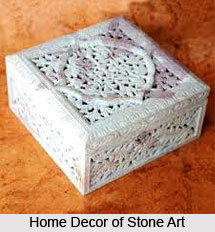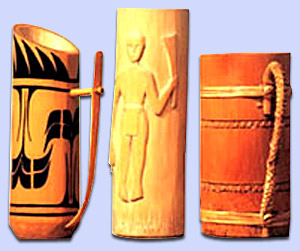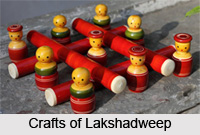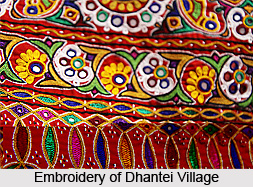 The stone crafts of Uttar Pradesh have flourished to a great extent due to the fact that the Muslim rulers of India have patronised this craft to a great extent. The stone crafts in Uttar Pradesh reached the zenith of excellence during the Mughal period when the Taj Mahal was made.
The stone crafts of Uttar Pradesh have flourished to a great extent due to the fact that the Muslim rulers of India have patronised this craft to a great extent. The stone crafts in Uttar Pradesh reached the zenith of excellence during the Mughal period when the Taj Mahal was made.
The stone crafts of Uttar Pradesh have shown their creative excellence through intricate architectural masterpieces. These are perfectly chiselled and are decorated with inlay work. Stone carving on sandstone carry the rich cultural heritage of royal fascination and the variety that had been explored by the artisans. These outstanding stone crafts are visible in the intricate curving on the forts and palaces. In the 3rd century B.C., the imperial court of Ashoka provided a great boost to the art of stone carving. The excavations found in Mathura and Agra areas verify that the red sandstone of Chunar has been lavishly used in the stone sculptures. The statues of religious gods and goddesses with excellent carving, brilliantly created articles of inlay work, stone carvings with embedded inexpensive shells or semi precious stones are some of the well known stone crafts that are admired in all around the country. The famous among the stone crafts of Uttar Pradesh is the mosaic work of Taj Mahal and Fatehpur Sikri.
The base material of stone craft in Uttar Pradesh is marble, gorara soapstone and occasionally cuddapah. The artisans of Agra sometimes use country made machines for cutting, grinding, buffing and polishing of stone. In some places the craftsmen still use chisel and hammer to bring out curved patterns and designs followed by grinding and polishing. The artisans are called Sadakars and Pachikars. The Sadakars create cutting and carving by machines and the Pachikars create carvings with the chisels.
Varanasi is the place where the great examples of stone craft have been seen. Sonia and Kalimohal areas of Varanasi, and Gokulpura in Agra are the places to where the instances of excellent artistry of stone craft are to be found. Most people of the areas, mainly the artisans of these areas, earn their livelihood by creating outstanding artifacts with stones.
Stone crafts of Uttar Pradesh stand as the epitome of strength and beauty. There is a stone carving industry at the Hamirpur district in Uttar Pradesh. The designs of Agra are world famous for its superb inlay work in marble. The designs are either foliage or floral intertwined with geometrical patterns. The artifacts created here have been inspired by the intricate works of Taj Mahal. The items like vases, boxes, lamps, plates, bowls and pitchers are created with delicately moulded shapes and fine carvings. Intricate friezes and trellis or jali work done in an eye- catching range of patterns is also specialty of Uttar Pradesh. Vrindavan near Mathura are admired for the marble as well as alabaster products. Some objects are embossed with semiprecious stones or synthetic gems. The items created with a dark brown stone with yellow spots and lines called `sange-rathek` are found in Jhansi. The articles include lampshades, incense stick stands, small medicine grinders etc.
The stone craft of Uttar Pradesh include marble boxes, wall plates, table tops, coasters, and ashtrays inlaid with semi-precious stones and mother of pearl in pleasing pietra dura designs that is derived from the Mughal monuments and paintings. Even the Gurara stone carvings, paperweights, and Rubic cube like candleholders, which take four different sizes, are considered as the intricate craftsmanship of the artisans of Uttar Pradesh.
Apart from creating different articles that catch the fancy of the local people and the tourists as well, the artisans create exclusive items that are placed in the trendy house to suit the decorative purpose.






